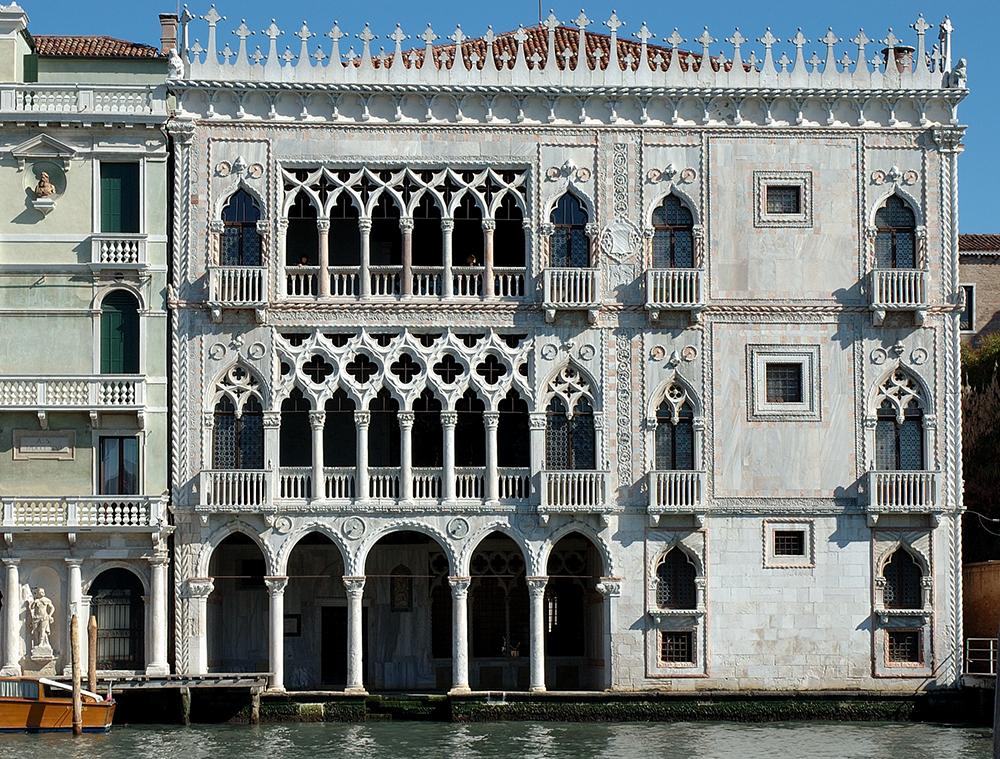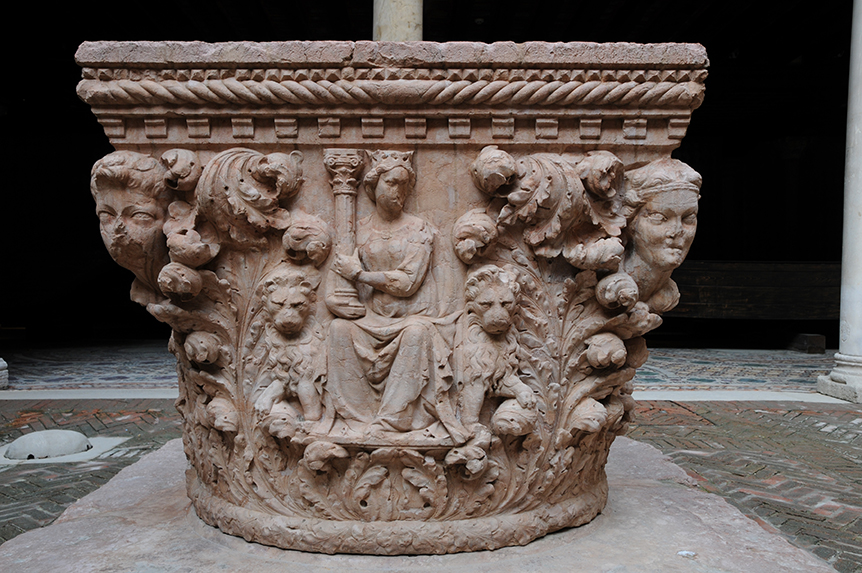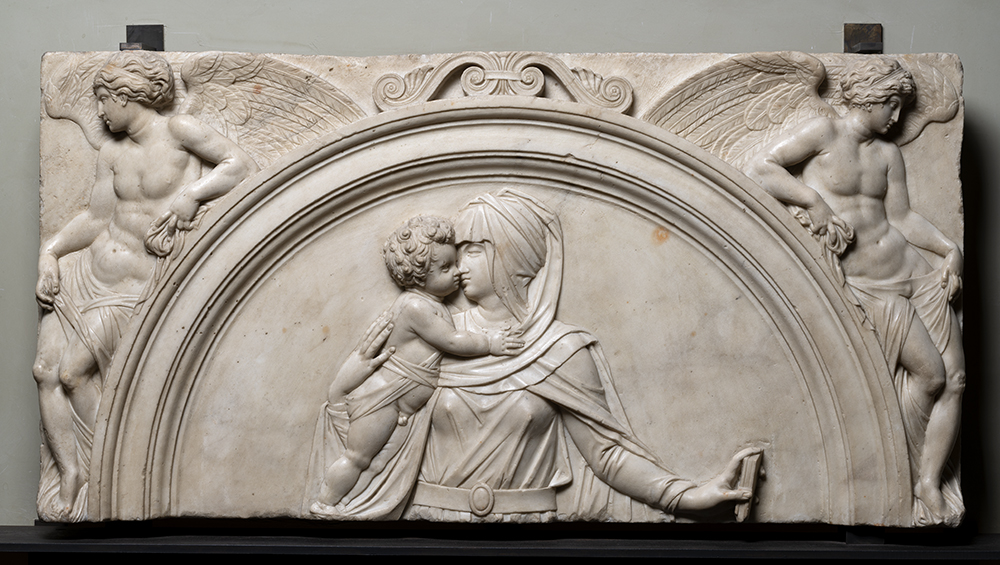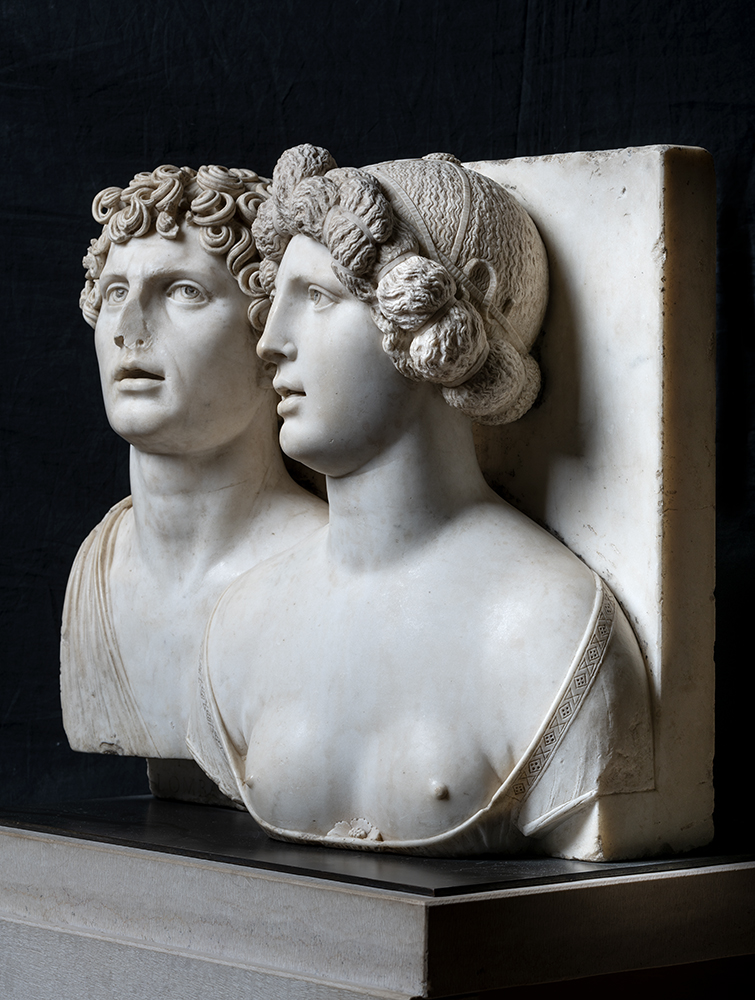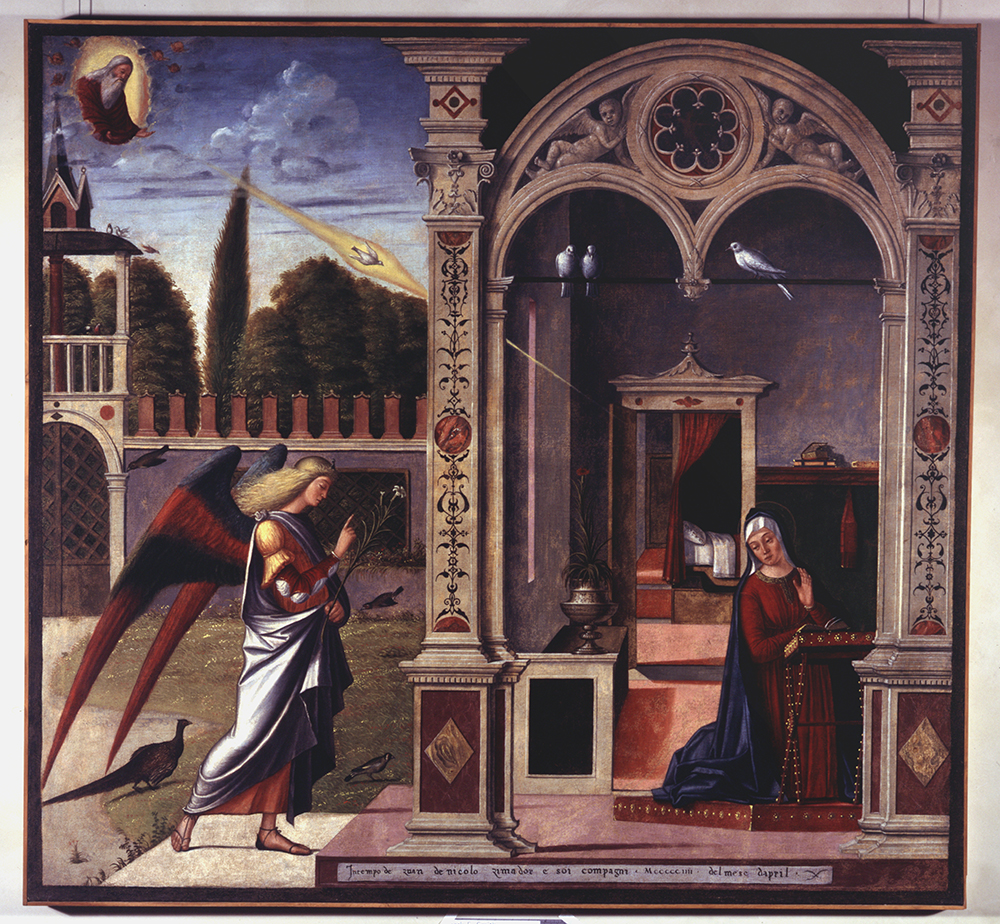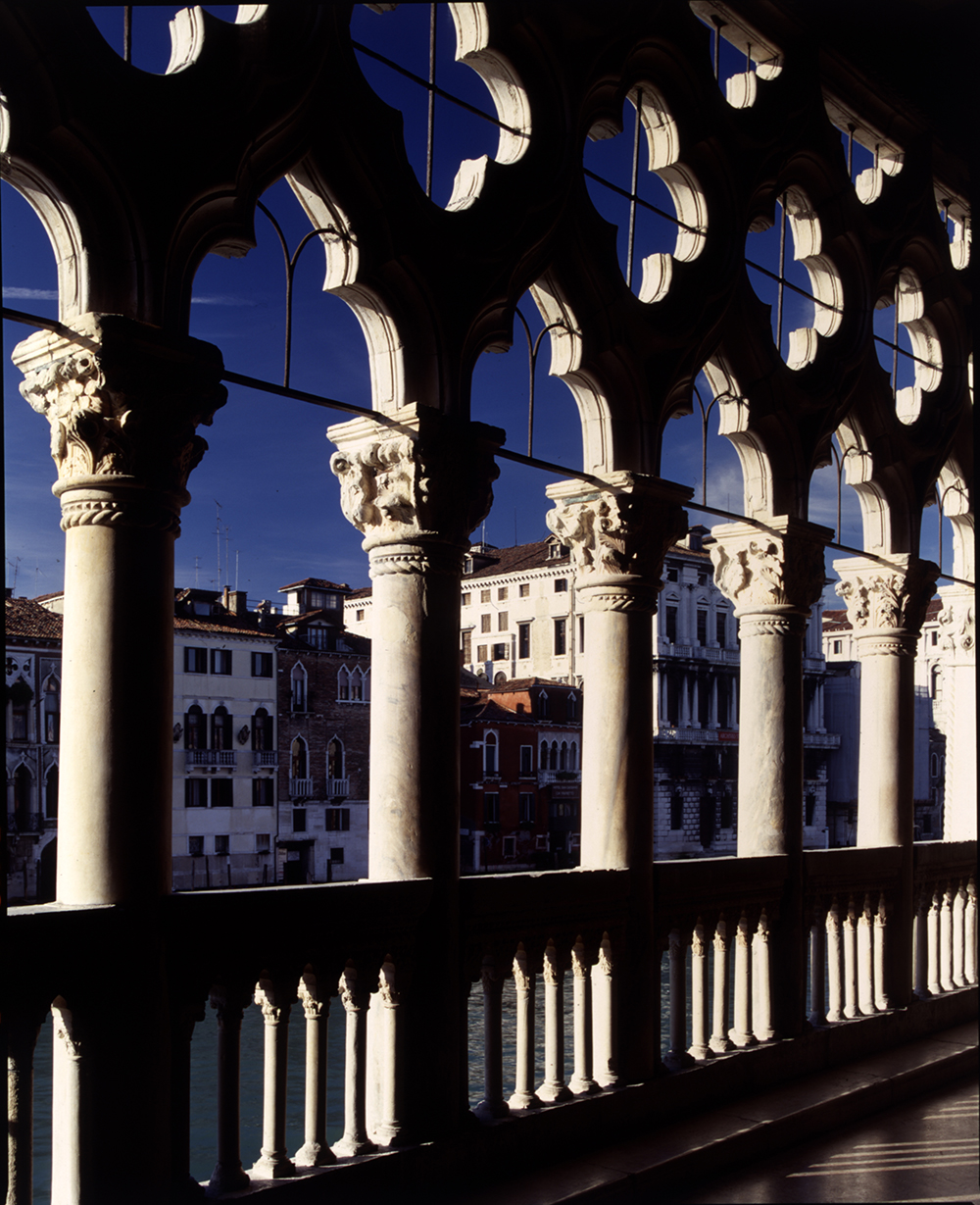
Giorgio Franchetti Gallery at Ca’ d’Oro
by Rachele Callegari
Located in the Cannaregio district, Ca ‘d’Oro was born as a fifteenth-century noble residence, commissioned by the procurator of San Marco, Marino Contarini and by brothers Bartolomeo and Giovanni Bon. It owes its name to the ancient facade decorated with golden finishes, no longer visible today; in its place, a facade of white and pink marble, asymmetrical, perforated and open only on its left side makes the building unique for Venetian architecture.
The building was purchased during the seventeenth century by the ballerina Marie Taglioni, who proceeded to a radical reorganisation of the rooms, removing many of the original details. In 1894, it passed to the hands of Baron Giorgio Franchetti and was subject to several restoration interventions. The interior rooms were used to house his large collection of furniture, paintings, sculptures and carpets that now form the original base of the Franchetti Art Gallery. Subsequently, the palace was donated by the baron himself to the Italian state and many other artworks were added to the original collection: indeed, most of the sculptures and bronzes and many Venetian and Flemish paintings come from state collections. Among the most valuable works preserved at the Ca ‘d’Oro today are the “San Sebastiano” by Andrea Mantegna, the “Judith” by Titian and large sections of Giorgione’s frescoes from Fondaco dei Tedeschi.
In addition to the permanent collections, the Franchetti Gallery also hosts temporary events and exhibitions. The last one was organised, in May 2020, on loan was Lorenzo Lotto’s “Holy Family with Saint Catherine of Alexandria” from the Carrara Academy of Bergamo; in exchange, the Franchetti Gallery temporarily loaned the “Sleeping Venus” by Paris Bordon.
Venezia, Galleria Franchetti alla Ca’ d’Oro – Direzione regionale Musei Veneto –
Su concessione del Ministero della Cultura
Discovering Venice just through the 5 senses

Sight
THE HOUSE OF THE “THREE OCI”
Walking along the Fondamenta delle Zattere, one is attracted by the Casa dei Tre Oci (eyes in Venetian), which overlooks San Marco’s basin. It was created in the 1910s as the home of the painter Mario de Maria, who wanted to commemorate the loss of his daughter Silvia: the three windows on the facade, the eyes, symbolise him, his wife and son Astolfo, while the mullioned window above them is the child that disappeared. It has always been a meeting place for artists and intellectuals, the house has hosted illustrious names over time, such as Dario Fo and more recently the architect Renzo Piano. After a restoration sponsored by the Venice Foundation in 2012, the palace was opened to the public: today it hosts events and conferences and is home to an important photographic archive.
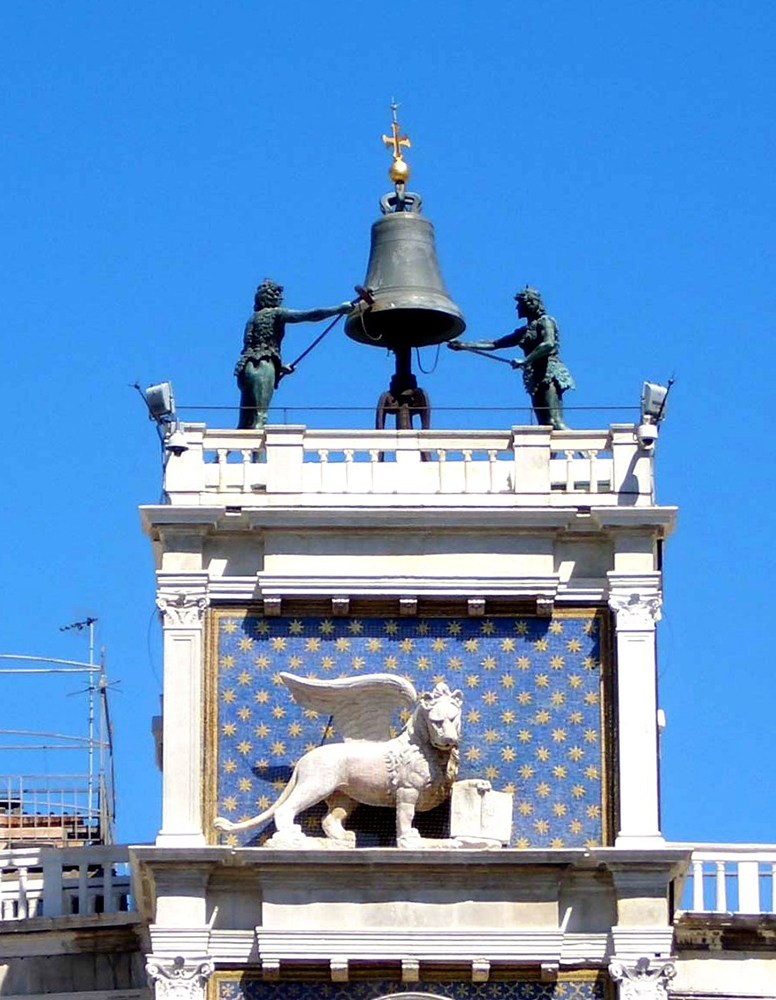
Hearing
RENAISSANCE RESTORATIONS
The Clock Tower in Piazza San Marco marks the entrance to the ancient street of the Mercerie, which has been a meeting place much used by the Venetians throughout the centuries. The focal point of the Tower is the terrace that surrounds it, on which the famous Moors are depicted, two bronze male figures armed with hammers, who “strike” the hour on the bell. Under the terrace stands the symbol of Venice, the winged lion; immediately below, a niche with two side doors, inside which there is a Madonna and Child in enamelled copper. Every year, from the day of Ascension and for the whole following week, at every stroke of the hour, the Three Wise Men come out of the two doors, preceded by an angel and passing in front of the Madonna, they bow.
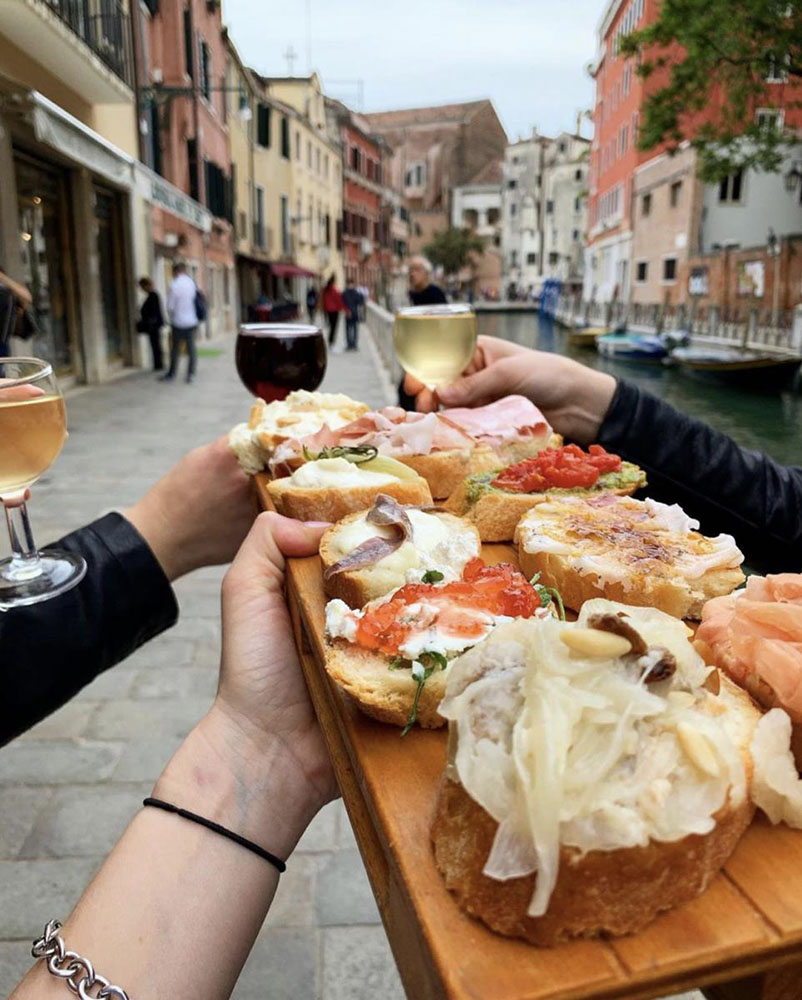
Taste
VENETIAN FINGER FOOD
The origin of the “cicheti”, a typical Venetian aperitif, is linked to the commercial soul of the city: they were created to accompany the wine that merchants drank to celebrate the success of a business. The term derives, according to some, from the Latin ciccum, signifying the membrane that covers pomegranates and in this sense it would indicate a small quantities; according to others, the etymology is French: from chiquet, in turn derived from the verb chichester, that is, to chop. What is agreed upon is the substance: small tastings of food, for example stewed folpetti (small octopus) or creamed baccalà (salt cod), which accompany aperitif hour and which can be tasted in bàcari, typical Venetian bars, often made up by only a counter and a few chairs.
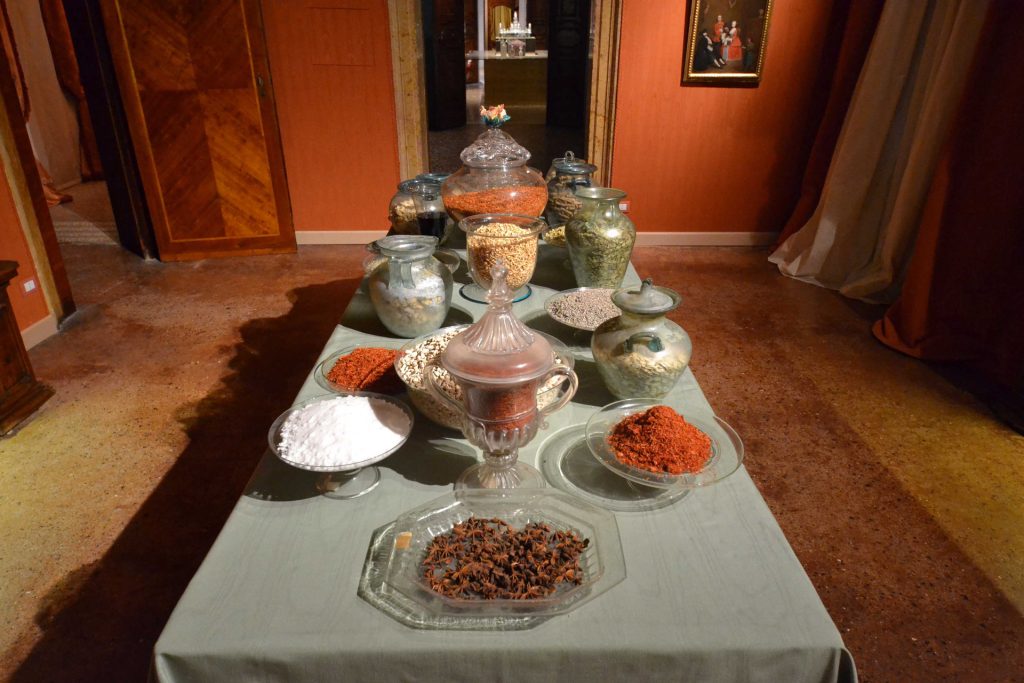
Smell
A SECULAR TRADITION
Inside the rooms of Palazzo Mocenigo, there is a section dedicated entirely to perfume. Created by Mavive, it is a seven-room trail that combines multimedia tools with sensory experiences, to illustrate the close relationship between Venice and the art of perfumery. In one room, for example, the workshop of the sixteenth-century perfumer, the so-called muschiere, is reconstructed, with particular attention to tools and manufacturing techniques; in another instead, the bottles of the Monica Magnani collection are exhibited, made from different materials and workmanship and dating back to different eras. In addition, the museum organises every year, in collaboration with the Academy of Perfume, the “Perfume Day”.
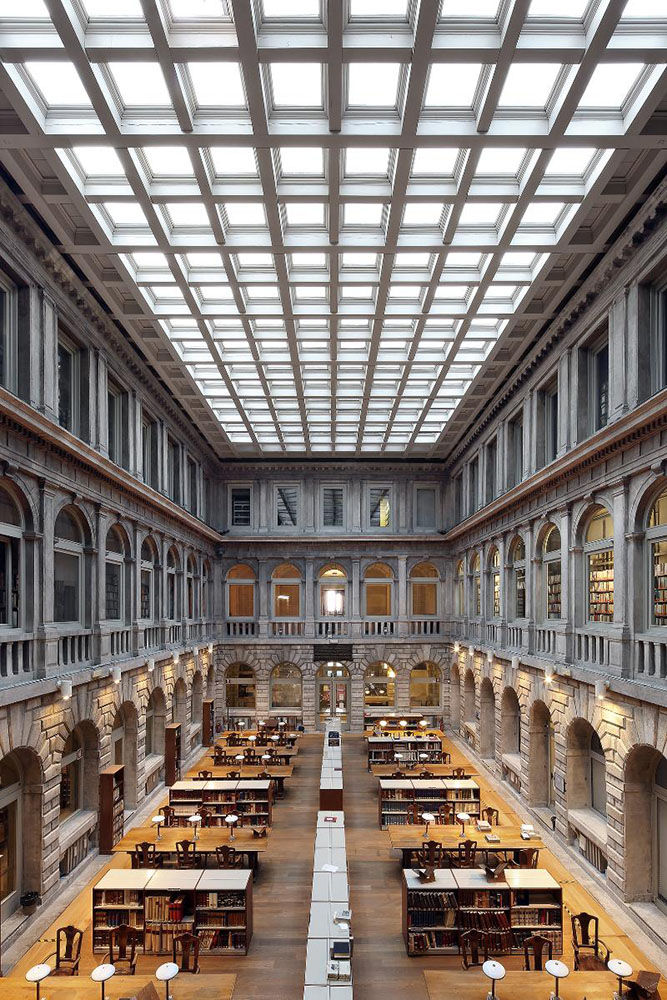
Touch
HANDLING MANUSCRIPTS
The Marciana National Library, also known as the San Marco Library, was built by the architect Jacopo Sansovino during the 16th century to house the manuscript collection of Cardinal Bessarione and was defined by Andrea Palladio as “the richest building that has ever been built” . The Library was enlarged over time through donations and bequests, and also as a result of the law issued by the Venetian Senate which required printers to deposit a copy of any printed book; the increase in volumes caused the Library to expand into the ancient Venetian Mint and the Sansoviana Library. Among the relics hosted by the Marciana, the Grimani Breviary stands out, a very precious sixteenth-century manuscript belonging to the art collector Domenico Grimani.
Did you know that…
The typical Venetian “ombra”, that is, a glass of wine that is drank at aperitif time, is so called because it was originally consumed away from direct sunlight. Ombra literally means shadow.



